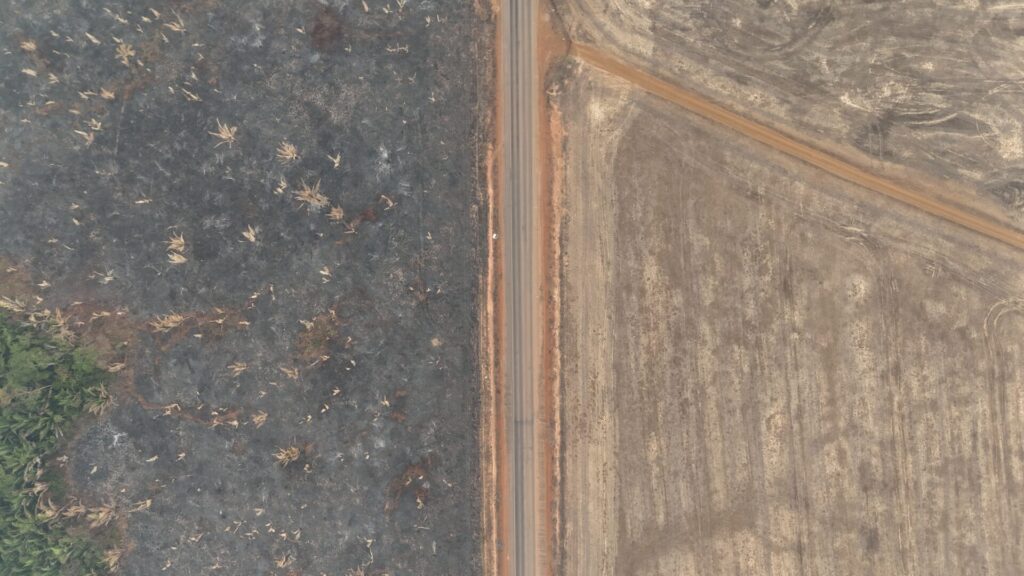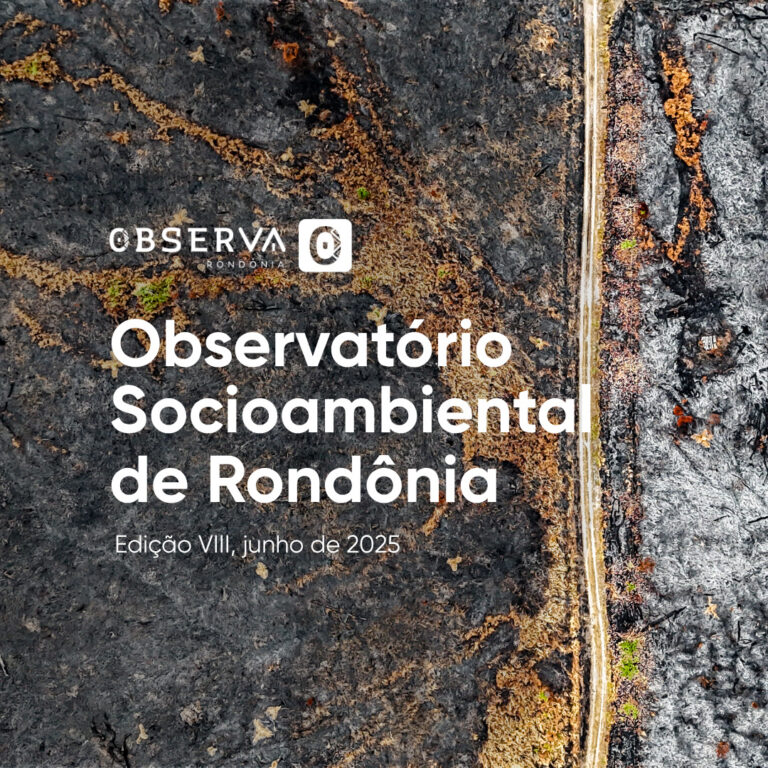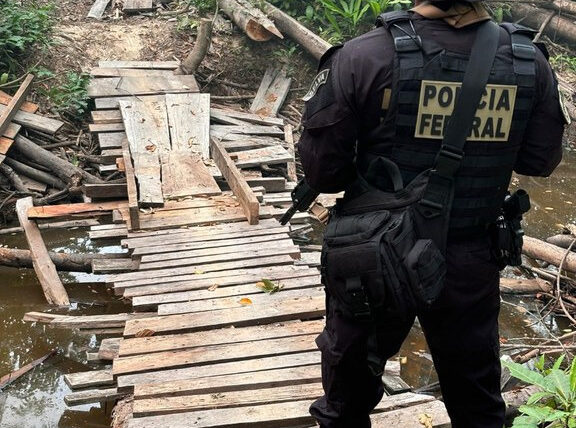90% of deforestation in the Amazon was illegal between 2023 and 2024, particularly in AMACRO municipalities, according to data from INPE and ICV.
Acesse a versão original em português: Desmatamento ilegal: o maior vilão da Amazônia.
In 2024, the Amazon rainforest recorded the highest number of fires in the last 17 years, a 43% increase compared to 2023, according to data from the National Institute for Space Research (INPE). The Amazonian biome suffered 5,704 km2 of deforestation and forest degradation, 90.8% of which was unauthorized. Here’s why.
These findings were revealed by a study conducted by the Instituto Centro de Vida (ICV), which cross-referenced data from INPE, the National System for the Control of the Origin of Forest Products (Sinaflor) and the state of Rondônia. The analysis helped identify which areas had permits for deforestation and which were cleared illegally. The study covered the period from August 2023 to July 2024, which corresponds to the official deforestation calendar year.
The report highlights the ten municipalities with the highest rates of illegal deforestation in the Amazon biome, each exceeding 100 km2 of cleared land. Three of them are located in the state of Amazonas (Novo Aripuanã, Apuí and Lábrea), four in Pará (Itaituba, Altamira, Portel and Santa Maria das Barreiras), two in Mato Grosso (Colniza and Nova Maringá) and one in Rondônia (Porto Velho).
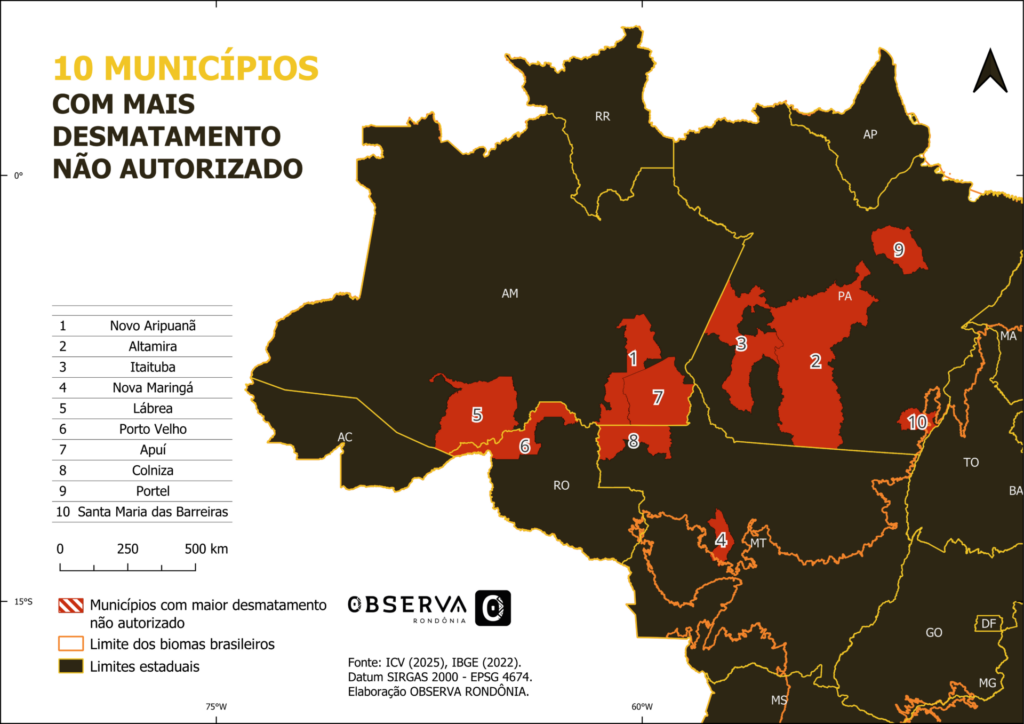
Among these, four are located within the AMACRO zone: Porto Velho, Novo Aripuanã, Apuí and Lábrea. In addition, Colniza in Mato Grosso, which borders the AMACRO, is also on the list. These results point to an intensifying wave of illegal deforestation in the Amazon, thus reinforcing the thesis of AMACRO being the New Arc of Deforestation, tied to the ongoing expansion of agribusiness.
Authorization for land clearing
The document authorizing the deforestation of an area, called an Autorização de Supressão de Vegetação (ASV) is issued by the Brazilian Institute of the Environment and Renewable Natural Resources (IBAMA) to allow the removal of native vegetation for projects of public or social interest, after approval through the environmental licensing process. The ASV aims to ensure the regulation of the exploitation, marketing and transport of the wood and other plant materials removed from cleared areas.
The approval process involves fulfilling compensation requirements and ensuring adequate forest replacement. An authorization for alternative land use, known as an Autorização para o Uso Alternativo do Solo (UAS), is also required when replacing native vegetation with another type of soil cover for different activities.
How unauthorized deforestation occurs
Due to a communication failure between the federal and state agencies responsible for issuing these documents, the Sinaflor is supposed to record all ASV and UAS authorizations issued in the country. However, a gap has been observed between the ASV and UAS information reported by state agencies, and what appears in the Sinaflor database, resulting in inadequate supervision of land-clearing authorizations.
Consequently, in January 2025, Supreme Federal Court (STF) minister Flávio Dino decided that municipalities in the Amazon and the Pantanal must adopt the Sinaflor as the sole platform for deforestation authorizations, thus facilitating the monitoring of land clearing.
AMACRO as the new agribusiness frontier
The AMACRO zone, which covers part of the states of Acre, Amazonas and Rondônia, has emerged as the new agro-industrial frontier of northern Brazil. Launched in 2021, the initiative was developed with “an innovative proposal” to address local challenges, aiming to reconcile sustainability with the socioeconomic development of the Amazon. In practice, however, what we see is the agribusiness frontier expanding again, following the same modus operandi.
According to a study published in the scientific journal Perspectiva em Ecologia e Conservação (January-March 2024 edition), AMACRO has been identified as a new hotspot of deforestation in the Amazon, raising concerns about its long-term impact on Brazilian agriculture and environmental resilience. The study found that the 32 municipalities included in the AMACRO project accounted for 76.46% of all deforestation recorded in the three states between 2018 and 2022, while representing only 23.37% of their total area.
This deforestation is driven by the growing role of agribusiness in the region. Between 2018 and 2022, land clearing for agribusiness increased by 5.61%, which corresponds to an average of 4,200 hectares per day being newly converted for pastures and crops, reaching a total of 7.2 million hectares in 2022 (InfoAmazonia).
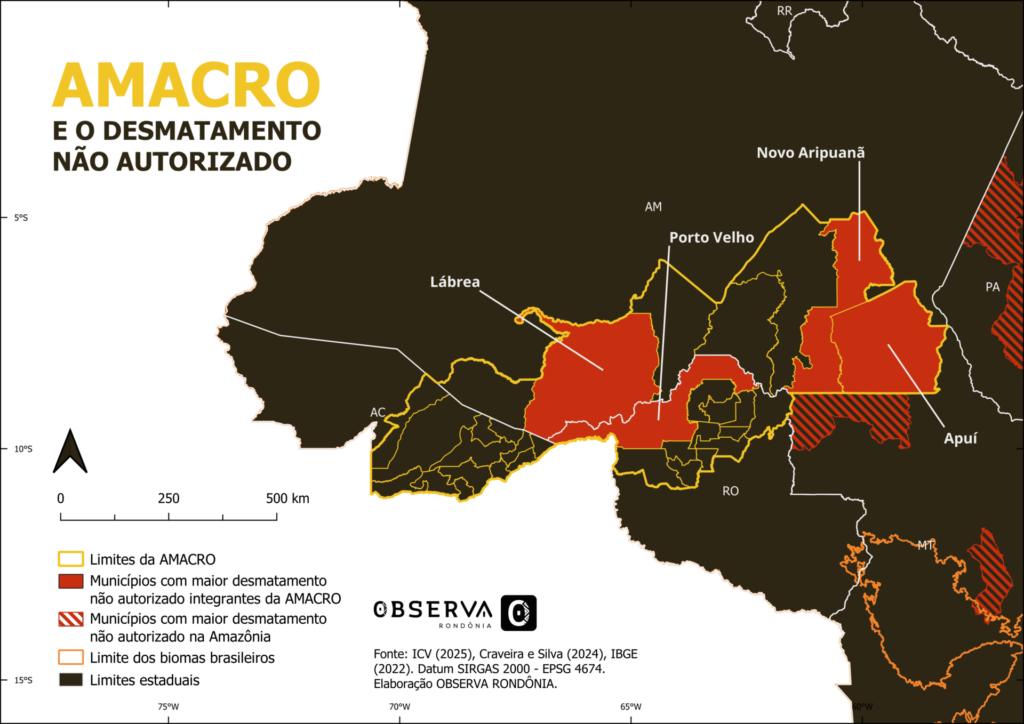
It is worth noting that among the 32 municipalities that make up AMACRO, there is an ecological corridor that serves as the last line of defense of biodiversity and traditional communities of the forest. Indeed, this area includes 49 Indigenous Lands and 86 Conservation Units.
References
QUASE 70% do desmatamento na Amazônia e Cerrado é ilegal. ICV, 13 February 2025. Available at: https://www.icv.org.br/noticias/quase-70-do-desmatamento-na-amazonia-e-cerrado-e-ilegal/. Accessed on 18 February 2025.
PRIZIBISCZKI, Cristianae. “Ilegalidade atinge 91% do desmatamento na Amazônia e 51% no Cerrado”. Apoia o eco, 13 February 2025. Available at: https://oeco.org.br/noticias/ilegalidade-atinge-91-do-desmatamento-na-amazonia-e-51-no-cerrado/. Accessed on 14 February 2025.
BECHER, Bruno. “Pesquisa alerta para impactos ambientais na fronteira agrícola do Norte”. Poder 360, 20 March 2024. Available at: https://www.poder360.com.br/opiniao/pesquisa-alerta-para-impactos-ambientais-na-fronteira-agricola-do-norte/. Accessed on 14 February 2025.
“Agronegócio na AMACRO ameaça futuro da Amazônia”. Infoamazônia. Available at: https://infoamazonia.org/storymap/agronegocio-na-amacro-ameaca-futuro-da-amazonia/. Accessed on 14 February 2025.
PONTES, Fábio. “Fronteiras da devastação”. O Varadouro, 16 January 2024. Available at: https://ovaradouro.com.br/fronteiras-da-devastacao/. Accessed on 15 February 2025.
“Maioria do desmatamento na Amazônia ocorreu sem autorização”. Instituto Estudos Amazônicos IEA, 14 February 2025. Available at: https://institutoestudosamazonicos.org.br/maioria-do-desmatamento-na-amazonia-ocorreu-sem-autorizacao-aponta-estudo/. Accessed on 15 February 2025.

